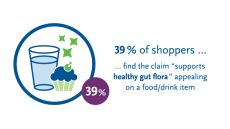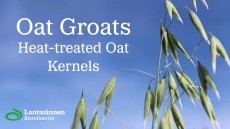Special edition: Natural and clean label
Consumers' views on natural and clean label terminology
National Starch commissioned research on consumer understanding of clean label terms in the UK, Germany and the US in 2007, and followed it up in 2010 in Germany and France. The study involved holding a series of moderated focus groups with consumers who were the main shoppers in their households, and the aim was to see not only how attitudes to clean label terms have changed but also to understand language-specific terms.
Mike Croghan, global director wholesome ingredients at National Starch Food Innovation told FoodNavigator.com: “No additives or preservatives, whether you like it or not, that’s what consumer want.”
He added that natural would be more powerful, but it is still subject to some misunderstanding. “If it were better defined, it would grow stronger,” he said.
Non-legal guidelines on use of the term ‘natural’ do exist in the UK and France, but with the exception of flavours there is no Europe-wide directive defining the term.
Moreover, consumers have seen ‘natural’ used as an adverb and an adjective so often that there is some scepticism. They also expect consistency between the front and the pack of a pack. For example, if there is natural imagery on the front, such as a picture of a farm, but on the back there are e-numbers listed, consumers will be mistrustful.
They may also make a judgement based on perceived level of processing or the food’s packaging, rather than just the ingredients list, asking: “Is it really that natural? It’s in a can”.
Natural or clean label?
Clean label is a term intended for industry use rather than consumer-use. Importantly, natural and clean label are not necessarily the same thing. Clean label embraces organic, but organic and natural are not interchangeable terms. Moreover, there are some natural additives and they may or may not be accepted as clean label.
National Starch has drawn up its own definition of ‘clean label’: Free from chemical additives; simple ingredient listing (without ingredients that sound chemical or artificial); minimally processed using traditional techniques that are understood by consumers and not perceived as being artificial..
No compromise, no chemistry
Croghan said he has observed a growth in clean label eating in the last three years. “It was strong in 2007, now it’s not just a trend but the way consumers expect and increasingly demand foods to be”. At the same time, however, they are unwilling to compromise on aspects such as taste.
National Starch has also drawn up lists of ingredients that are well-accepted by consumers, including starches, flour and bran. Maltodextrin, lecithin and guar gum are borderline ingredients, while e-numbers, anything chemically-modified, monodiglycerides, and other chemically sounding names may be best replaced.
Xanthan gum is an interesting case, Croghan said: “Anything that begins with an x sounds like chemistry. It is not necessarily the most natural ingredient anyway, but the name doesn’t do it any favours”.























